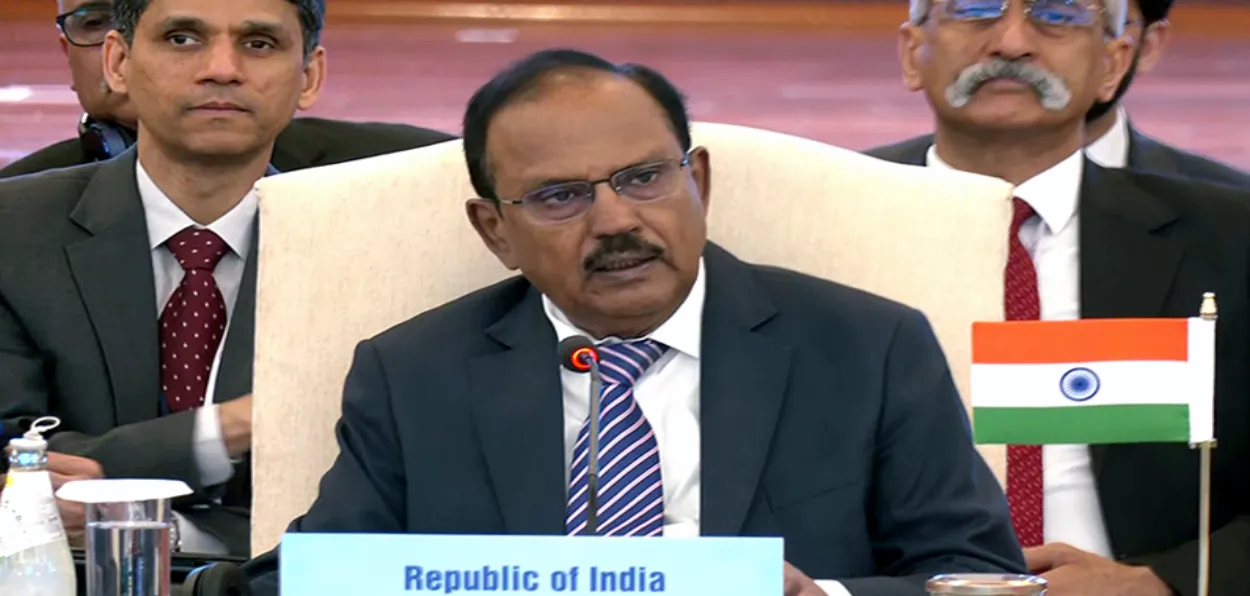
Saquib Salim
National Security Advisor Ajit Doval, with his opening remarks at the Shanghai Cooperation Organisation (SCO), has reminded World leaders that “Terrorism in all its forms and manifestations and its financing are amongst the most serious threats to international peace and security”. Several political commentators believe that the remarks were an indirect reference to Pakistan which also happens to be a member of SCO.
The Western Media reports Terrorism with a specific US-centric lens and their history of terrorist attacks starts with the 9/11 twin tower incident in 2001. In comparison, India has been facing Pakistan-sponsored terrorism since its independence. Indian planes were hijacked and taken to Pakistan several times between 1971 and 1999. In most cases, hijackers received evident support from Pakistan. In US-centric scholarship, terrorism is not posing any serious threat at present. But, from a global perspective, the terrorist threat is even worse.
The recent Amritpal episode has brought back memories of the Pakistan-sponsored Khalistan Movement of the 1980s. News of targeted killings of Hindus and migrant workers in Kashmir can also be frequently heard. Many will ask why NSA Doval is making this statement at a time when the number of terrorist attacks, and fatalities, in India are at their lowest in the last four decades. Such people don’t understand the very aim of terrorism.
Decreased incidents of bombings, shootings, hijackings, and other overt violent activities do not mean that terrorists are silent. To understand one has to go back to the very definition of terrorism. Prof. Leonard Weinberg and William Eubank in their book The Roots of Terrorism: What is Terrorism? Write, “publicity and psychology are at the heart of terrorism”. ‘Terrorism is to cause terror’ is a very superficial understanding of the term. “In fact”, Weinberg argues, “terrorism is a kind of politically motivated violence in which publicity — sending a message — plays a crucial role.” So, one of the most important aspects of terrorism is to send a political message to a large public.
One of the fallouts of sending this message to a large public is that people feel vulnerable. They start losing confidence in legitimate government. In 1996, several Cricket teams did not play their allotted matches of the World Cup in Sri Lanka as the threat of LTTE loomed large. It affected the economy of the island country and its politics largely.
The most important goal of terrorists is to publicise their point of view. Hijackings are a case in point. They pay high dividends as media coverage takes their message to millions of people without much effort. Hijacking to get Masood Azhar released in 1999 gave him public attention he never enjoyed before.
So, if you are arguing that since the 26/11 attack in Mumbai in 2008, terrorist activities are on a decline, think again. (There have been attacks on armed forces during these 15 years). Since then the internet and hence social media has revolutionised communication methods like never before. Now they do not need a larger spectacle of bomb blasts to attract the media. Cori E. Dauber and Kemal Ilter in their essay, The Relationship between Social Media and Radicalization argue that social media “platforms can, (therefore), significantly increase the audience size for messages created by extremist groups”.
Dauber and Ilter point out, “for the first time, terrorists can cut out the middleman - they are reliant on no one else to get their message out. They don’t have to hope that journalists will represent their message as they would have wanted it represented, the groups can send out the message they want to be sent out, the way they want it sent out because it will be seen unedited.”
Most social media platforms are designed to keep people interested, which in turn means that ‘more and more extreme material’ is catered to the users.
Now take a pause. In 2023, Amritpal, without carrying out any bombing or hijacking, is reaching more people through Twitter, Facebook, WhatsApp and other social media than Khalistanis of the 1980s could not even dream of even after several bomb blasts. The target is to create panic among the general public and radicalization a small group of people.
Kashmiri terrorist Burhan Wani can be seen as the first Social Media terrorist India has encountered. Like his predecessors, he did not need big attacks to catch the media's attention. He used Facebook posts to reach out to vulnerable youth to radicalize them.
India is facing a threat where foreign-sponsored Twitter handles, YouTube channels, and Facebook pages based in and out of the country are trying to create panic among Indians, radicalize vulnerable youth and malign the national image on the International stage. This is what terrorism is by the very definition.
ALSO READ: Exiled Pak journalist Taha Siddiqui pens comic book on hounding by Pak Army
“Peter Kropotkin, a nineteenth-century anarchist, referred to terrorism as “propaganda by deed,” a means by which small groups can attract attention to a political cause, no matter what the cause may be.” Do I need to explain more that how India is facing the threat of terrorism more than ever before and why as a nation we need to prioritise the fight against the terrorists?
